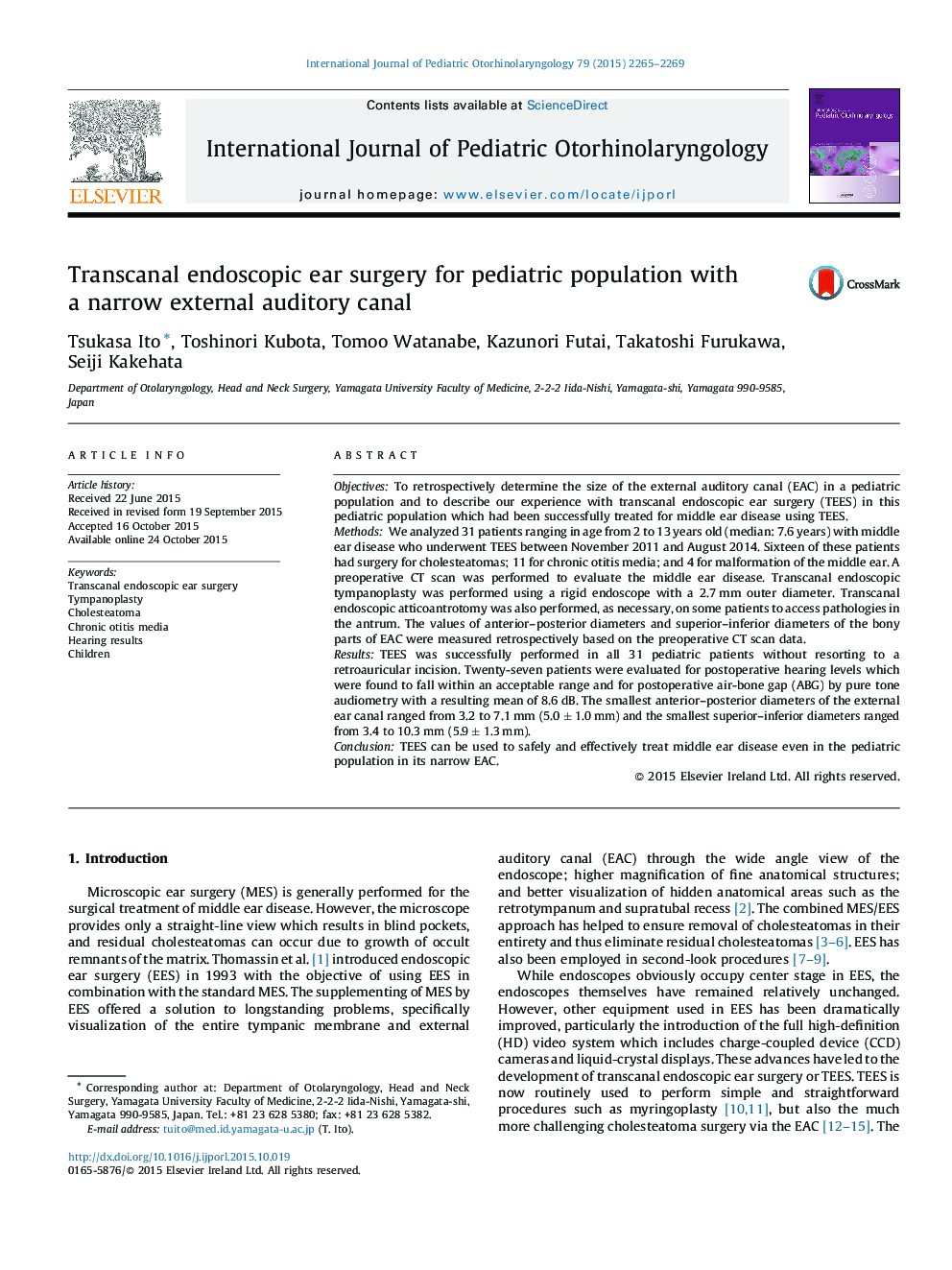| Article ID | Journal | Published Year | Pages | File Type |
|---|---|---|---|---|
| 4111598 | International Journal of Pediatric Otorhinolaryngology | 2015 | 5 Pages |
ObjectivesTo retrospectively determine the size of the external auditory canal (EAC) in a pediatric population and to describe our experience with transcanal endoscopic ear surgery (TEES) in this pediatric population which had been successfully treated for middle ear disease using TEES.MethodsWe analyzed 31 patients ranging in age from 2 to 13 years old (median: 7.6 years) with middle ear disease who underwent TEES between November 2011 and August 2014. Sixteen of these patients had surgery for cholesteatomas; 11 for chronic otitis media; and 4 for malformation of the middle ear. A preoperative CT scan was performed to evaluate the middle ear disease. Transcanal endoscopic tympanoplasty was performed using a rigid endoscope with a 2.7 mm outer diameter. Transcanal endoscopic atticoantrotomy was also performed, as necessary, on some patients to access pathologies in the antrum. The values of anterior–posterior diameters and superior–inferior diameters of the bony parts of EAC were measured retrospectively based on the preoperative CT scan data.ResultsTEES was successfully performed in all 31 pediatric patients without resorting to a retroauricular incision. Twenty-seven patients were evaluated for postoperative hearing levels which were found to fall within an acceptable range and for postoperative air-bone gap (ABG) by pure tone audiometry with a resulting mean of 8.6 dB. The smallest anterior–posterior diameters of the external ear canal ranged from 3.2 to 7.1 mm (5.0 ± 1.0 mm) and the smallest superior–inferior diameters ranged from 3.4 to 10.3 mm (5.9 ± 1.3 mm).ConclusionTEES can be used to safely and effectively treat middle ear disease even in the pediatric population in its narrow EAC.
